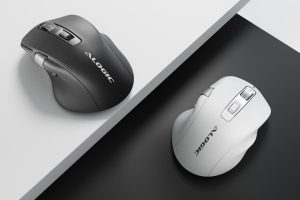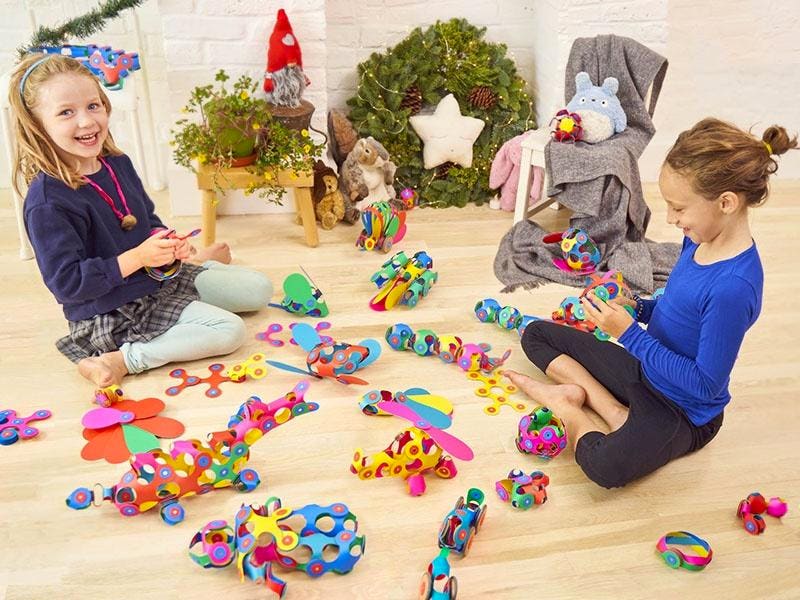From an accessibility standpoint, one of Apple’s less heralded innovations of the past decade is the Cupertino tech titan’s reliance upon magnets in so many of its industrial designs. The Smart Cover for iPad. The ear cushions for AirPods Max. The prescription lens system for Vision Pro. Most people praise Apple’s harness of magnetic force in shaping positive user experiences as elegant and easy to use. Yet ease of use is inextricably tied to accessibility. The truth is, using magnets as a connector goes far beyond sheer genius from a materials viewpoint; given the physics involved, magnets make swapping, for instance, the AirPods Max’s ear cuffs a far more accessible task. For many with visual and motor impairments, the presence of magnets to attach and detach certain elements may very well be the difference between inaccessibility and accessibility. A small detail in the grand scope of a product. As I always say, it’s the seemingly mundane parts of a product that, when executed well, end up making the biggest impact for a disabled person.
Magnets are cool. Apple sure knows it. So does Toyish Labs.
The company is maker of a children’s toy called the Clixo. On its website, the product is billed as the “building block reinvented,” as it uses magnets to fasten and unfasten itself. In addition to magnets, Clixo is different than other similar toys on the market in its malleability. The toy is extremely flexible, which not only aids in spurring creativity, it also aids in accessibility because it makes for easier manipulation. The Clixo has been critically acclaimed by parents and child development experts alike, and has earned numerous recognition from educational groups.
Assaf Eshet, founder of Toyish Labs and creator of Clixo, explained to me in an interview over email earlier this month his self-described “whimsical curiosity” has helped propel him towards developing function yet fun objects that, he said, “allowed me to push the boundaries of design mediums.” He added a core motivation is to make things “that are more than just products and harness the power of play.” Eshet has long been fascinated by the philosophy and psychology of play, which—hearkening back to my years as an early childhood studies student—is lauded by experts as the most developmentally appropriate way children learn, as it satiates their creativity and curiosity into how the world works. “My creations strive to embody the principles and values I have discovered in my decades of working within the toy industry and teaching design, such as tapping into children’s natural creativity and curiosity, learning by experimenting, and promoting nonsense, humor, and communication through play,” Eshet said.
Clixo came to fruition after a lot of prototyping—“over a thousand iterations later,” according to Eshet. In terms of its place in the marketplace, Eshet touted the open-ended nature of Clixo. He believes Clixo is a “universal” toy that, he told me, ”addresses the need to transcend the boundaries of age, gender, and ability, facilitating inclusive and collaborative communal play.” Toy makers, he told me, are generally obsessed with toys that capitalize on capitalism. That is, companies try to make stuff that is entertaining and tied in, licensing-wise, with other entertainment. While enjoyable, Eshet said these toys lack a crucial element: inclusivity. It’s Clixo’s laser-like focus on inclusiveness that separates the offering from its competitors. Consistent with disability’s overall societal standing, Eshet said accessible, inclusive toy makers are few and far between; he cited Moluk out of Switzerland and Plan Toys from Thailand as two notable peers in the marketplace.
Like with computer software, it’s Eshet’s hope that toy manufacturers will begin considering accessibility from the get-go as opposed to treating it like an afterthought, which is too often common practice. “My hope is that, by raising awareness of the significance of play and the barriers to it, more toy creators will be mindful of the inclusive properties of their products and play experience,” he said.
Eshet was keen to emphasize that, akin to how Jony Ive described the original iPad, there’s no wrong way to play with Clixo. Speaking to its inclusiveness, he said the toy has many benefits to people with various disabilities. He called it an excellent fidget toy for members of the neurodivergent community, saying Clixo’s “shape, sound, and fluidity of it make it pleasing and therapeutic” to children and adults on the autism spectrum. Likewise, he noted children who are nonverbal and/or have motor delays are able to partake in parallel play alongside their peers due largely to Clixo being simple to grasp without any prompting.
Noa Nitzan, an occupational therapist, accessibility consultant, and UX designer, echoed many of Eshet’s sentiments on Clixo and inclusive toys in a concurrent interview to his. She’s a staunch advocate of allowing children the latitude to play for play’s sake, telling me it’s important for children to initiate and direct activities. Currently, Nitzan works at Israel’s Gaha Innovation Center, a leading mental health facility.
“I love design, especially inclusive design, and I fell in love with Clixo because this toy has a lot of playfulness and creativity, and it offers many opportunities for promoting and developing various skills,” Nitzan said of her affinity for Clixo. “Since discovering Clixo, I have used it in my work and advised other professionals about how to implement it.”
When asked about the appeal of Clixo, Nitzan responded by saying finding age-appropriate toys and games for disabled children can oftentimes be difficult. The beauty of Clixo, she said, is it has universal appeal; people of any age and pick up and enjoy Clixo. It’s playful and fun because it’s open-ended by design. It’s one of those objects that adheres strongly to child development experts, like Nitzan, who attribute children’s learning to free play. Play is not a pacifier or nothing; depending on the activity, Nitzan explained play helps children build skills across every developmental domain. Socio-emotional development is a key part of this, especially when playing with others. Nitzan particularly praised Clixo for its ability to “allow a strengthening of self-confidence and a sense of competence” in children, due in large part to how it encourages creativity and self-expression in an artistic sense.
“You can do a lot of things with it, both simple and complex, so there is no frustration in the process,” she said of Clixo’s appeal.
As in software, inclusivity is becoming table stakes for toy makers.
“Today, in our field, we are talking more about inclusive design, and not just about accessibility, because we want to use products that will suit as many children as possible,” Nitzan said of the increased emphasis on inclusivity in design circles. “We don’t want to develop and design products that will be dedicated to children with disabilities as this can perpetuate stigma and inequality. We want children with disabilities to play with their siblings and other children without disabilities in the same games.”
She continued: “The message to designers and developers is to take into account principles of inclusive design in the development process and create a better product that appeals to a larger market. This has already been proven in the field. Many leading companies understood the importance of inclusive design. Since they took into account the needs of large populations and implemented the universal design principles, they are now selling a better product to everyone. In fact, it’s a strategy that promotes their products from a business standpoint. A better product is made when specific needs, sometimes considered niche, are taken into account, which benefits the product rather than harming it.”
A salient point made by Nitzan is people (parents, educators, etc) don’t necessarily want specialized, so-called “accessible” toys. She reemphasized the ideal that good design is inclusive design, since an inclusively designed product—be it Clixo or a piece of software or whatnot—is a better product for having a variety of audiences and use cases. Labeling a toy as “accessible,” marketing-wise, may render a product that consumers are unwilling to buy. They are, however, inclined to buy toys that are suitable to varying age groups and abilities.
“We would like games and toys that are convenient, easy to use, and with a good user experience and high engagement opportunities. Parts that are uncomfortable to hold and manipulate or fonts that are too small are not good for anyone – both for a child with and without a disability,” she said. “Beyond that, there is more awareness in the field of disability, equality, and social integration. This is happening all over the world and is also reflected in policy, education, and the business world.”
For his part, Eshet told me customers have been “super supportive” of Clixo, adding the feedback he gets from buyers goes a long way in informing future iterations of the product in terms of design. He said the company is “constantly” hearing from adults—parents, grandparents, teachers—who all marvel at the delightfulness of Clixo. “It has so many levels of discovery and satisfaction that it is fun for everyone that plays with it,” he said. “We hear that [users] enjoy playing and exploring with Clixo as much as their kids, leading to many stories of parents buying their kids additional packs after keeping the first for themselves.”
As has been established, Clixo was designed to be universally loved.
Eshet echoed Nitzan’s remarks about good design being inclusive design, saying it’s his wish that people eventually won’t want or need such designs because they’ll be commonplace. He went to to say that while adaptive designs are good (sometimes necessary) pathways, what would be even better is if universal design were the standard-bearer. A product, like Clixo, that has been conceived and developed with accessibility in mind from the outset will always be a better package in the aggregate.
“The strength of Clixo is its universal design lies in its DNA, guaranteeing that each person will find value and joy from exploring and playing with it,” Eshet said of the product’s true superpower.
Looking at Clixo in the long-term, Eshet told me prospects are good for a bright future. He’s currently holding workshops during which the Toyish Labs team teaches people at what he described “some of the world’s largest companies” about how to spark creativity by demonstrating the capabilities of Clixo. One of particular note, he said, came at Google. The Clixo proved instrumental in helping the tech giant’s executive team improve their team-building exercises. The workshops have been so successful that Eshet and crew hope to do many more in the future.
Overall, Eshet is committed to pushing onward with Clixo.
“I would really love to keep growing with Clixo and further nurture the close dialogue we have with our community,” he said. “I am passionate about developing through extensive testing and iterations, and I think the full spectrum and potential of Clixo will reveal its layers as we grow and dare to ask questions and engage Clixo with new audiences.”
Read the full article here










